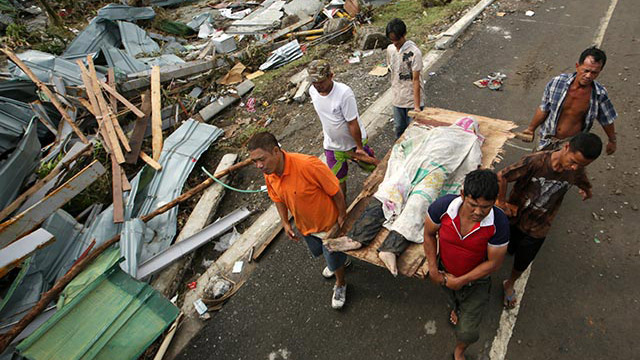SUMMARY
This is AI generated summarization, which may have errors. For context, always refer to the full article.

MANILA, Philippines — Troops on the ground continue to retrieve hundreds of bodies, but the National Disaster Risk Reduction and Management Council (NDRRMC) has been slow to update its casualty tally.
The NDRRMC tally as of 6 am Wednesday, November 20, showed at least 4,011 were killed, 18,557 were injured, and 1,602 remained missing following monster typhoon Yolanda (Haiyan).
In hard-hit Tacloban City, NDRRMC data recorded 696 deaths, a number that has been constant since 7 days ago, November 13. But Task Force Cadaver in Tacloban City already recovered a total of 1,172 from November 16-19.
The task force recovered 780 bodies on Saturday, November 16; 125 on Sunday, November 17; 151 on Monday, November 18; and 116 on Tuesday, November 19, in the city, according to task force commander Pablito Cordeta.
Cordeta told Rappler more bodies were recovered on Wednesday, November 20.
Most of Tacloban City is now cleared of debris, he said. Clearing operations continue in the inner roads of the city.
NDRRMC executive director Eduardo Del Rosario explained the council requires a formal casualty report signed by the mayor and municipal health officer before it adds the numbers to the official count.
The strongest typhoon ever recorded affected 10 million people in 9 regions mostly in the Visayas. Nearly 400,000 are staying in government centers. Another 4 million are staying with relatives and friends.
The International Committee of the Red Cross (ICRC) also sent a forensic expert to assist Philippines officials in the “proper management of the dead.”
“There are certain procedures that should be followed to preserve the dignity of the victims and facilitate their identification,” said Andres Patino, ICRC expert in humanitarian forensic action.
The current circumstances make body identification a challenge, said Patino. — Rappler.com
Add a comment
How does this make you feel?
There are no comments yet. Add your comment to start the conversation.